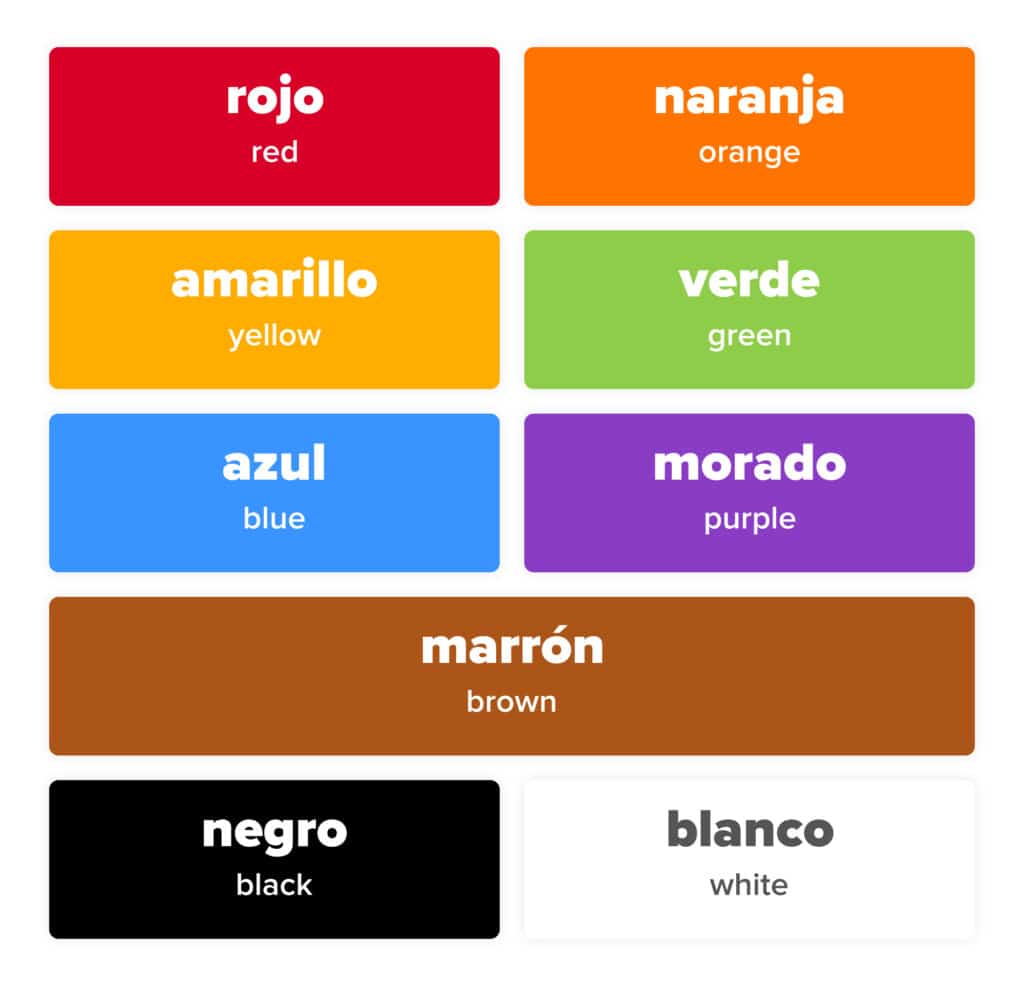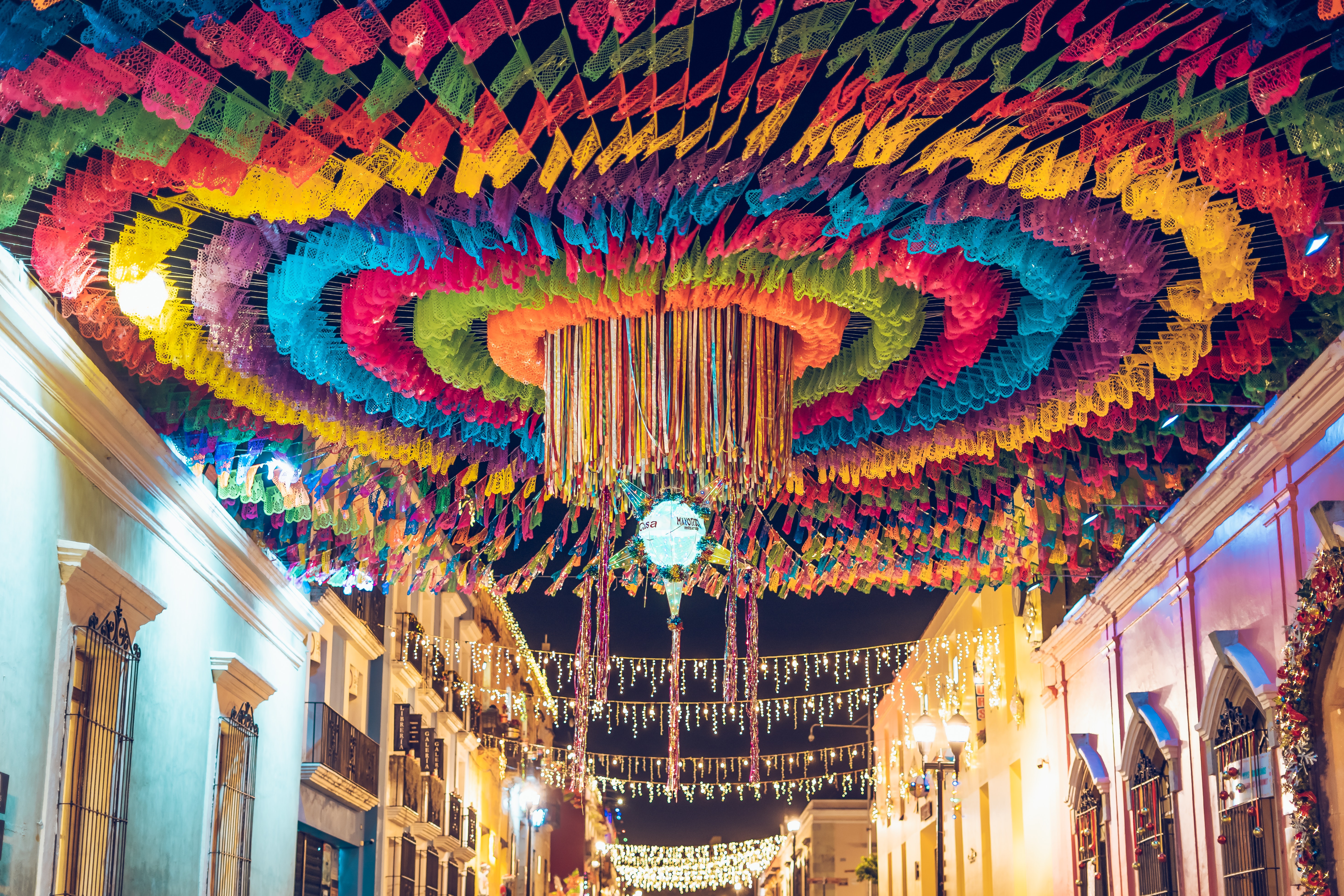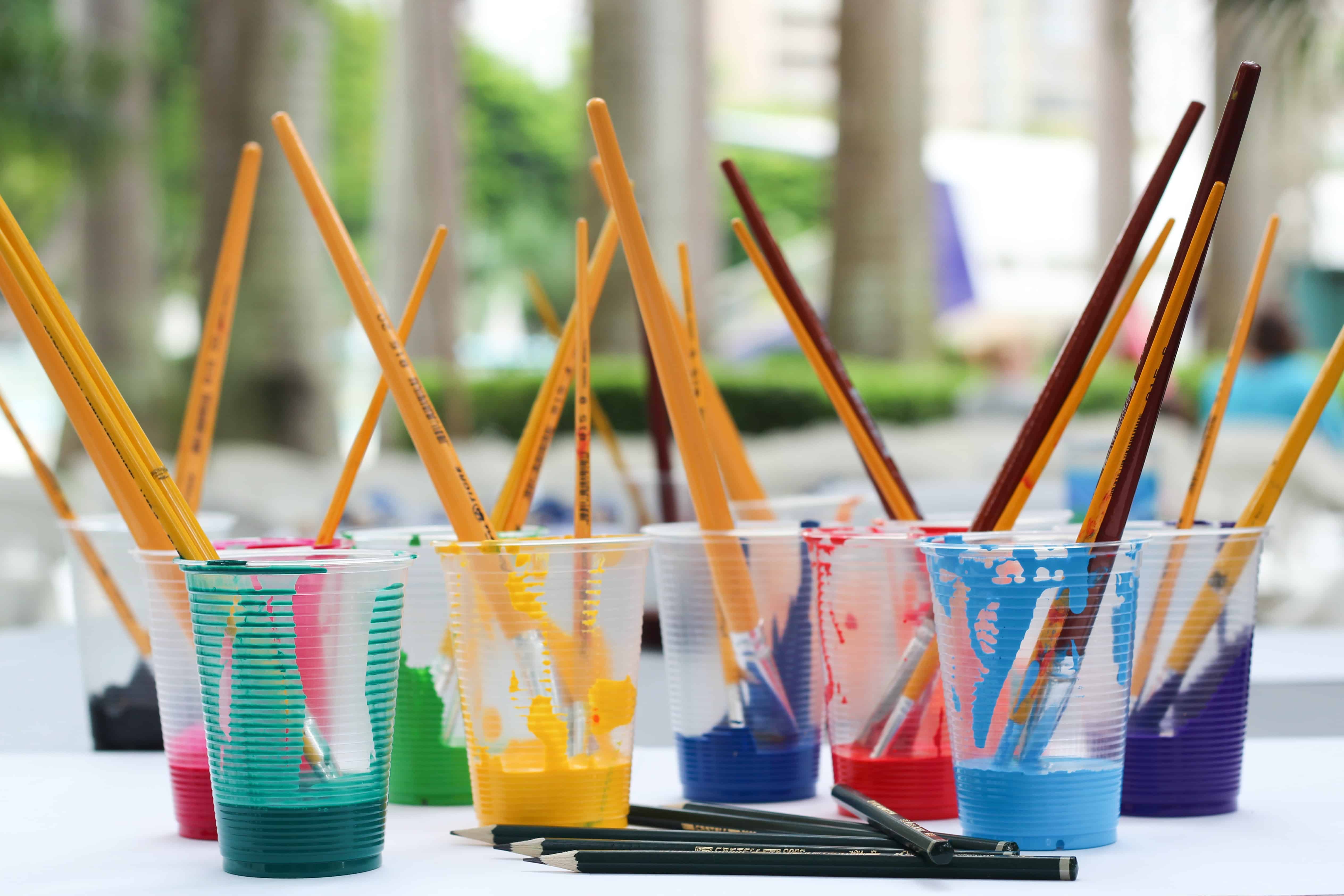
[ad_1]

What had been the primary phrases you realized in Spanish?
I’d guess that a few of them had been colours!
It’s not laborious to see why—colour phrases are important for plenty of duties, from writing creatively and understanding poetry, to indicating objects and expressing likes and dislikes.
This text will present you a number of the commonest Spanish colour phrases, in addition to an important guidelines for utilizing them!
Contents
Obtain:
This weblog submit is on the market as a handy and transportable PDF that you just
can take anyplace.
Click on right here to get a replica. (Obtain)
Important Spanish Colours
Rojo / Roja — Purple
Anaranjado / Anaranjada / Naranja — Orange
Amarillo / Amarilla — Yellow
Verde — Inexperienced
Azul — Blue
Morado / Morada — Purple
Marrón / Café — Brown
Negro / Negra — Black
Blanco / Blanca — White
Rosado / Rosada / Rosa — Pink
Violeta — Violet, Purple
Lila — Lilac
Gris — Grey
Magenta — Magenta
Escarlata — Scarlet
Ámbar — Amber
Turquesa — Turquoise
Índigo — Indigo
Granate — Maroon
Dorado / Dorada — Gold
Plateado / Plateada — Silver
Be aware that some colours don’t change with gender—in our lists, these are the colours which solely have a single translation. For instance, azul and verde don’t change gender, whereas negro and morado do.
Additionally observe that anaranjado/anaranjada (orange) and marrón (brown) are extra widespread in Spain, whereas you’ll probably hear naranja (orange) and café (brown) utilized in Latin America.
Phrases To Describe Colours
Spanish Colours To Describe Individuals
Eye Coloration
Pores and skin Coloration
Hair Coloration
Grammar Guidelines for Utilizing Colours in Spanish Sentences
You could already know a few of these guidelines, so right here’s a fast refresher. Nonetheless, for those who’re not tremendous aware of these, with some apply you’ll have them down pat.
You may velocity up that course of by exposing your self to a lot of native Spanish content material, so you may hear how native audio system speak about colours. Yow will discover native content material on YouTube, or a language studying program like FluentU.
FluentU comes with over 1000 genuine Spanish movies—together with issues like information reviews, music movies and vlogs—which all include interactive subtitles.
It makes studying extra environment friendly because it’s simpler to identify situations of colour phrases and guidelines. Plus, simply click on on the phrases and buildings to see their definitions, pronunciations, instance sentences and to robotically add it to a flashcard deck.
1. Take note of phrase order
Like most Spanish adjectives, the colour phrases go after the noun they describe.
For instance:
El coche azul. (The blue automotive. Actually, “the automotive blue.”)
2. Be careful for quantity and gender
When utilizing the colour phrases as adjectives, you will need to make the colours agree with the quantity and gender of the noun.
For instance, el sofá (the couch) is a singular, masculine noun. Las actrices (the actresses) is a plural, female noun.
As with all Spanish adjectives, you will need to be certain that the colour phrases agree with the noun they describe.
Los ojos azules. (The blue eyes.)
Las casas blancas. (The white homes.)
3. A colour that doesn’t finish in o gained’t change its spelling
Gender change guidelines don’t at all times apply, as any colour that doesn’t finish in an o gained’t change its spelling.
For instance: verde (inexperienced), azul (blue) and rosa (pink).
4. You normally use ser with colours
When describing what colour one thing is, corresponding to in a sentence like “The cellphone is black,” you nearly at all times use the verb ser.
El teléfono es negro. (The cellphone is black.)
Las botellas son amarillas. (The bottles are yellow.)
The verb estar (to be) typically refers to momentary states of being. There are uncommon instances wherein you may want to make use of estar to explain the colour of one thing.
Right here’s an instance: When you wished to say that right now the sky is grey due to an impending rainstorm, you might use the verb estar (because it’s usually blue):
El cielo está gris. (The sky is grey.)
5. Use “de colour” to simplify issues
One other technique to describe colour in Spanish is to say that one thing is de colour… (the colour…).
With this building, you’ll at all times use the masculine, singular model of the colour—whatever the noun!
Las camisetas son de colour rosa. (The shirts are the colour pink.)
6. Colours don’t change gender within the noun + colour + adjective/noun method
While you mix noun + colour + adjective/noun, the colour and adjective/noun don’t change genders.
Because of this it doesn’t matter what gender or quantity the principle noun is, the colour and the adjective/noun will stay within the masculine singular type.
For instance:
El libro azul oscuro. (The darkish blue e-book.)
La camisa azul oscuro. (The darkish blue shirt.)
Los libros azul oscuro. (The darkish blue books.)
Las camisas azul oscuro. (The darkish blue shirts.)
7. Colours might be nouns
Colours can even act as nouns, not simply adjectives.
When a colour features as a noun, it is going to at all times be masculine, it doesn’t matter what.
El rosa es mi colour favorito. (Pink is my favourite colour.)
Los naranjas te quedan muy bien. (Orange colours fits you very nicely.)
Spanish Colours Observe Quiz
Now that an important colours in Spanish, it’s time to apply them! By training the colours, you’ll have the ability to begin utilizing them in your personal Spanish conversations so as to add additional data.
1. Me gustan tus zapatos (purple). (I like your purple footwear.)
2. No encuentro mi falda (black). (I can’t discover my black skirt.)
3. El (yellow) es mi colour favorito. (Yellow is my favourite colour.)
4. Tengo los ojos (inexperienced). (I’ve inexperienced eyes.)
5. El (orange) es un colour cálido. (Orange is a heat colour.)
6. Mi abrigo es de colour (pink). (My coat is pink.)
7. No puedo quitar una mancha de mi camisa (white). (I can’t take away a stain on my white shirt.)
8. Mi amiga tiene un coche (gentle blue). (My good friend has a light-weight blue automotive.)
9. Hay tantas casas (colourful) en México. ¡Son espectaculares! (There are such a lot of colourful homes in Mexico. They’re spectacular!)
10. Parece que va a llover pronto. El cielo está (grey). (It seems to be prefer it’s going to rain quickly. The sky is grey.)
Solutions:
1. Rojos
2. Negra
3. Amarillo
4. Verdes
5. Anaranjado/naranja
6. Rosado/Rosa
7. Blanca
8. Azul claro
9. Coloridas
10. Gris
The Spanish colours are easy to study and use when you get the grasp of some guidelines.
And so they enhance your potential to precise your self in Spanish, whether or not it’s in a grocery store or in a poetry workshop.
So, go forth and add colour to your Spanish!
Obtain:
This weblog submit is on the market as a handy and transportable PDF that you just
can take anyplace.
Click on right here to get a replica. (Obtain)
[ad_2]




